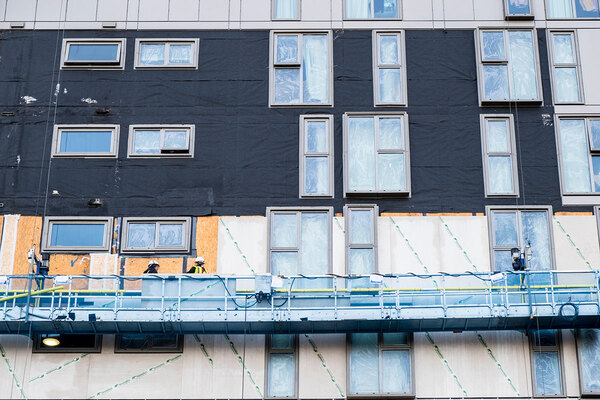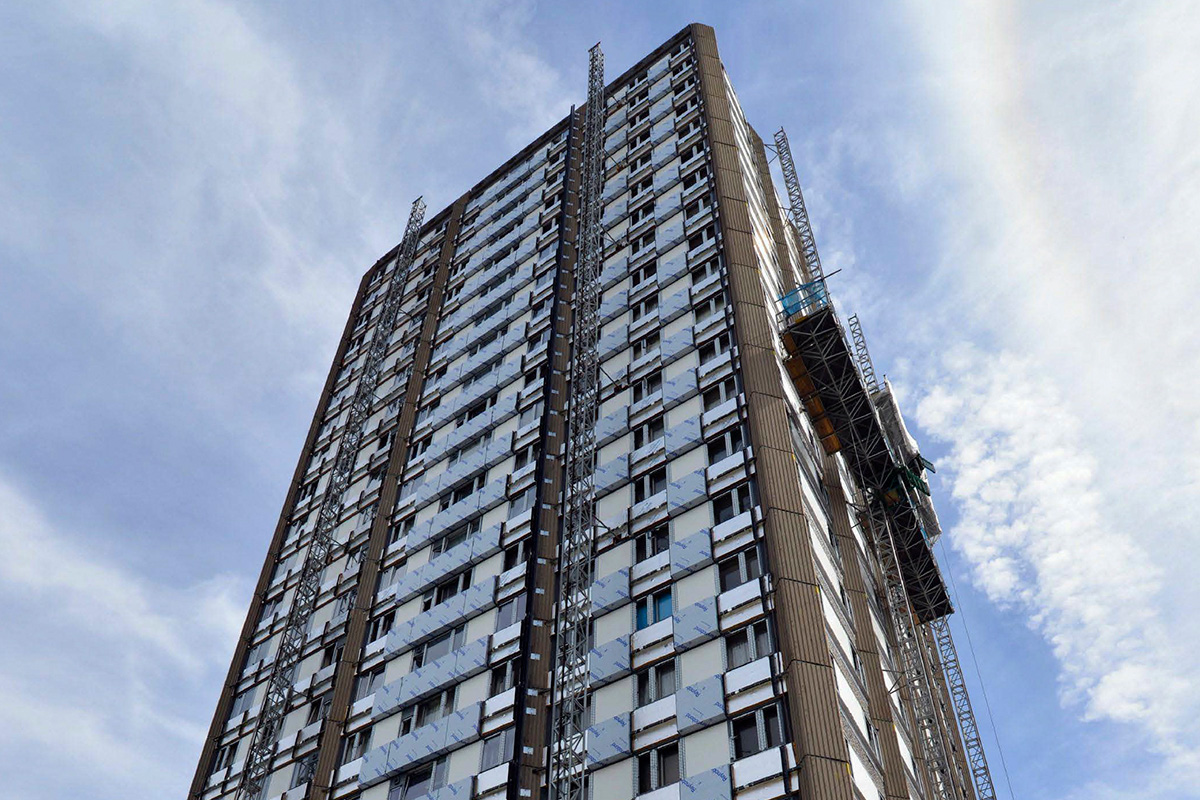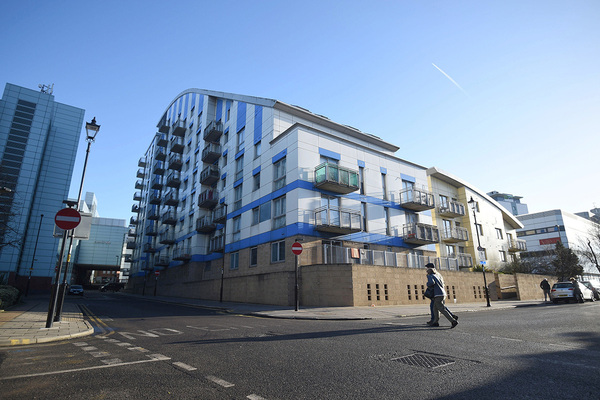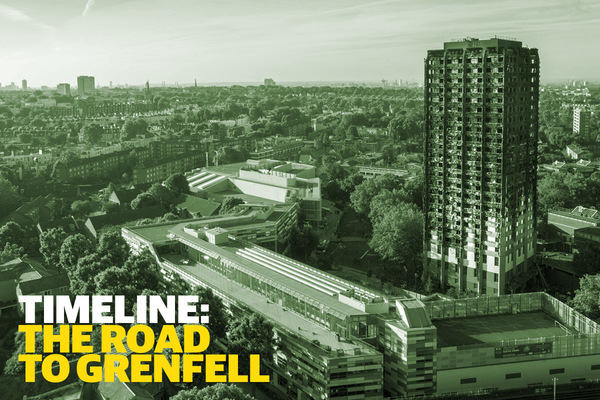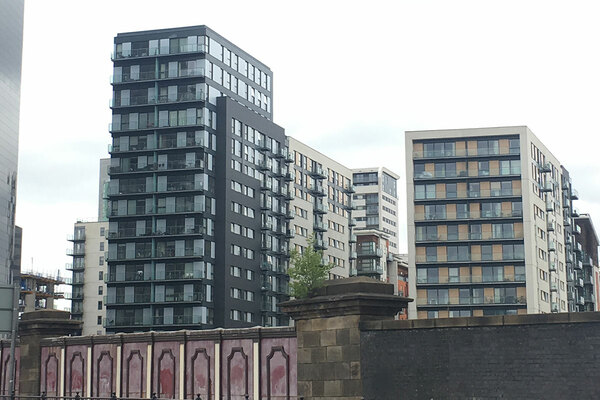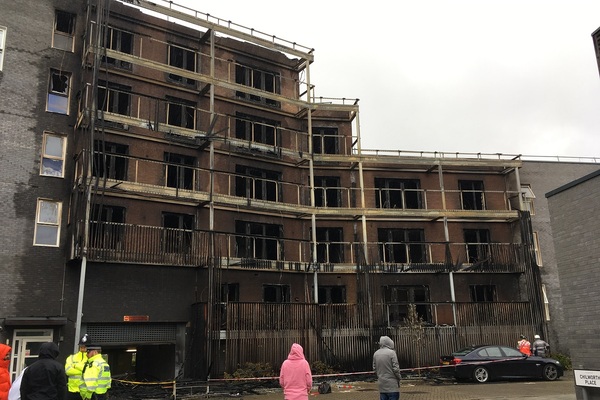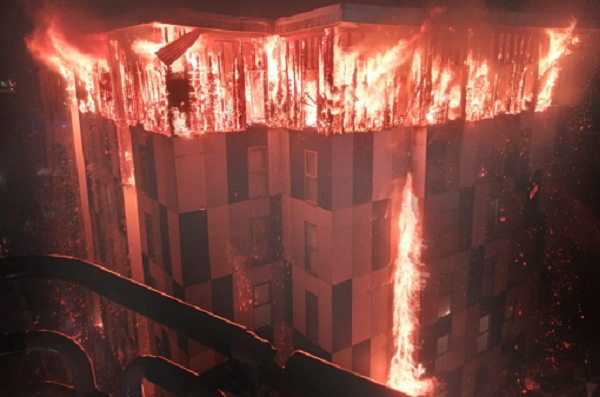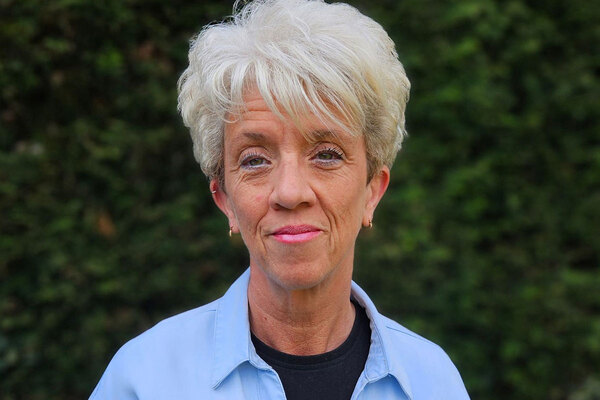The post-Grenfell building safety crisis: a timeline
Since the Grenfell Tower fire three and a half years ago, the country has become increasingly overwhelmed by a crisis of dangerous materials on other buildings. Peter Apps charts how it has progressed
16 June 2017: Two days after the fire, the government orders social landlords to carry out an audit of their tower blocks – reporting on how many they own and details of any refurbishments. It is confirmed that aluminium composite material (ACM) cladding was used on Grenfell Tower.
17 June 2017: At a behind-closed-doors meeting, the government and a group of hastily assembled officials discuss their response. They conclude ACM cladding does not comply with building guidance and assume they will be dealing with a small handful of buildings.
19 June 2017: The government orders social landlords to send in samples of ACM cladding on their tower blocks for testing. The first ACM panels are identified on towers in Barnet the next day.
22 June 2017: Camden Council reveals that it is urgently stripping cladding from five towers on the borough’s Chalcots Estate with residents evacuated to hotels and a nearby leisure centre due to the fire risk.
28 June 2017: All 120 cladding samples sent in to the government programme have failed tests. The National Housing Federation calls for a halt to the testing programme and a move to work to remediate the buildings.
6 July 2017: The government announces a programme of large-scale testing of cladding systems to assess their safety. Against advice from at least one expert, it only includes ACM systems in the testing.
28 July 2017: A large-scale test using similar materials to those on Grenfell, fails in seven minutes almost setting fire to the testing facility. It is clear the system is dangerous, even when installed correctly.
1 September 2017: The ACM testing programme concludes, and only three combinations of ACM and insulation pass. The government issues advice saying building owners of towers with failed systems must “seek professional advice”.
6 September 2017: Sajid Javid, communities secretary at the time, reveals that out of 89 privately owned buildings that have had their cladding tested, 85 have failed tests.
13 September 2017: A letter leaked to Inside Housing reveals that the government has been refusing to fund work to install sprinklers in tower blocks, branding the work “additional, not essential”.
October 2017: The National Fire Chiefs Council publishes guidance recommending the use of a ‘waking watch’ fire patrol in buildings with dangerous cladding.
4 December 2017: Mr Javid tells private building owners not to pass on costs to leaseholders for cladding remediation for the first time.
18 December 2017: Dame Judith Hackitt, appointed by government to lead a review into building regulations, unveils the conclusion of her interim report, describing the system as “not fit for purpose”.
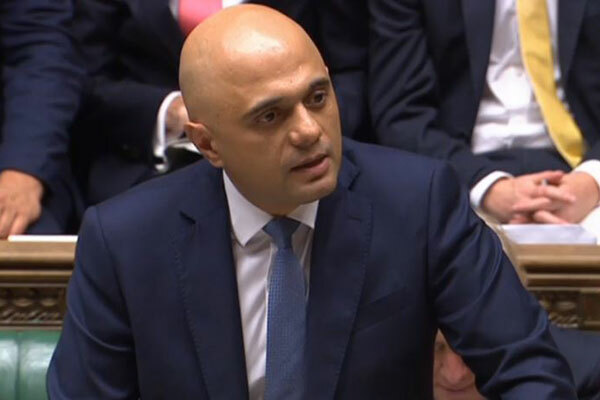
19 December 2017: The first statistical release on dangerous cladding shows that 284 tower blocks have been identified. It says 26 have had cladding removed and only one has completed replacement.
10 January 2018: A mortgage lender refuses to lend on a building in Southend because of fire safety issues – the first evidence of what will become a huge crisis for the sector.
18 January 2018: As leaseholders of Citiscape in Croydon are told they face a £2m bill for cladding removal works, warnings are issued that tens of thousands of other residents across the country will be in the same position.
11 May 2018: Inside Housing reveals that the Hackitt Review will not recommend a ban on dangerous cladding or desktop studies, despite huge pressure from expert groups, survivors and MPs to do so.
16 May 2018: Under mounting pressure from survivors for tougher action, Ms May announces £400m to directly fund the removal of dangerous cladding for the social housing sector only. Removal work has completed on just seven buildings, with 317 identified.
17 May 2018: The Hackitt Review is published, recommending against an outright ban on dangerous cladding. After survivors say they are “saddened and disappointed” by this omission, the government immediately U-turns, launching a consultation on a ban. The rest of the report recommends an overhaul of the regulation of tall buildings.
3 July 2018: Leaseholders in a block in Manchester (pictured) lose a tribunal and are ordered to pay £3m for the replacement of dangerous cladding.
3 October 2018: The government goes ahead with its combustible materials ban, but limits its impact to tall buildings only – despite calls for it to apply to other properties such as care homes.
28 November 2018: Research estimates that a further 1,600 buildings have dangerous cladding materials on their walls.
18 December 2018: The government publishes Advice Note 14, which says all external facades on tall buildings must be constructed from materials of ‘limited combustibility’ or justified by a large-scale test pass. But this is much tighter than previous building guidance and mortgage providers will begin declining to lend unless compliance with the note can be shown.
10 January 2019: Figures show the remediation of buildings with Grenfell-style cladding stalling. Just 67 completions out of 437 identified towers have happened.
26 April 2019: With private leaseholders facing huge bills for remediation, Inside Housing and several groups of leaseholders launch the End Our Cladding Scandal campaign.
9 May 2019: As an open letter is published calling for government action to fund cladding removal in the private sector, the government gives in to pressure and announces a £200m fund to pay for it.
10 June 2019: A huge fire rips through timber cladding at Samuel Garside House in Barking (pictured). It later emerges that ‘Class D’ rated timber cladding had been used and that a fire risk assessment had warned of the issues.
24 June 2019: Despite previously ignoring warnings that guidance did not cover balconies, the government publishes an advice note telling building owners to remove any combustible materials from them. It declines to offer funding.
18 July 2019: Communities secretary James Brokenshire promises all ACM blocks will complete remediation by June 2020 and says the government has launched a data collection exercise to quantify the amount of dangerous cladding systems of other kinds
26 July 2019: A high-pressure laminate cladding system passes the official test under the government programme – but the test is criticised for using materials that are far less combustible than those on real-world buildings.
9 August 2019: A timber-framed care home in Crewe burns to the ground.
9 September 2019: A timber-framed apartment block in south-west London burns to the ground.
12 September 2019: Residents warn that difficulty accessing the £200m fire safety fund is making it “feel like a PR stunt”, with forms required from all leaseholders before an application can be processed.
16 November 2019: With the crisis over stalled flat sales getting worse, industry figures warn that the market has come to a complete standstill as a result of government advice notes. An estimated 600,000 people are believed to be living in unsellable flats.
18 November 2019: A fire seriously damages student accommodation in Bolton that is clad in high-pressure laminate panels (above).
16 December 2019: In a bid to unstick the sales market, industry bodies agree a new process to allow buildings to be sold, which involves a surveyor signing off an ‘EWS1’ form to declare the building safe.
20 January 2020: The government announces that the threshold for the combustibles ban and sprinklers will be lowered to 11m and consolidates all its advice notes into a single document.
31 January 2020: Inside Housing reveals the data collection exercise is in trouble, with 70% of affected buildings yet to be identified.
11 March 2020: Following continuing pressure from leaseholders, the government announces a £1bn fund for the removal of dangerous cladding of all types from private buildings.
30 March 2020: A privately-commissioned test on a widely-used combination of HPL cladding and combustible insulation shows a severe failure.
2 April 2020: Non-ACM testing is finally released, although it is criticised for not being comparable to ACM tests. The government claims that the “lower peak heat release” of non-ACM products confirm that they pose a lower risk.
18 May 2020: The government backs away from its promise to oversee the completion of ACM remediation by June 2020, with 307 towers still awaiting work.
19 May 2020: New building safety minister Lord Stephen Greenhalgh (pictured above) tells a select committee hearing that the £1bn fund will cover less than a third of an estimated 1,700 affected buildings.
11 June 2020: A new survey by campaigners reveals the scale of the mental health crisis among those impacted, with one in five leaseholders reporting suicidal thoughts.
12 June 2020: Inside Housing reveals buildings below 18m are being denied mortgages unless they can produce an EWS1 form, vastly amplifying the number of people affected by the crisis.
18 July 2020: The government publishes its Building Safety Bill, which would overhaul the regulation of the construction sector, but also contains provisions that would force leaseholders to cover the cost of defects through a new “building safety charge”.
20 August 2020: A number of large housing associations confirm plans to bill leaseholders for cladding work if they do not receive government funding.
27 September 2020: With the number of impacted leaseholders growing, Inside Housing relaunches the End Our Cladding Scandal campaign alongside The Sunday Times and more than a dozen leaseholder action groups.
20 October 2020: Lord Greenhalgh is criticised after saying leaseholders will have to meet some cladding costs.
23 November 2020: The government attempts to limit the scope of EWS1 forms to buildings with dangerous cladding systems but the mortgage industry indicates it may not support the move.
10 December 2020: Government advisor Michael Wade briefs MPs and leaseholder groups on a plan to set up a system of long-term loans to building owners that would be repaid by leaseholders. The charity Leasehold Knowledge Partnership proposes an alternative method whereby a range of industry levies would be introduced to repay upfront government funding.
11 December 2020: A widely used polystyrene cladding system fails almost as seriously as the system used on Grenfell in an Australian fire test.
19 January 2020: Lord Greenhalgh backs the idea of a developers’ levy to help pay for remediation works, but suggests it would raise just £2bn – a fraction of the overall costs.
31 January 2020: Ahead of a debate and vote in parliament on protecting leaseholders from costs, Labour leader Keir Starmer sets out a plan to set up a national taskforce to fix the crisis.
10 steps to End Our Cladding Scandal
Based on the recommendations of the Housing, Communities and Local Government Select Committee and backed by a range of sector bodies and MPs from across the political spectrum, these are Inside Housing’s 10 steps to End Our Cladding Scandal:
- The government must lead an urgent national effort to remove all dangerous cladding from buildings by June 2022.
- The Building Safety Fund must cover all buildings, regardless of height, and a range of internal and external fire safety defects, not just cladding.
- The government should provide the money up front and then seek to recover it from any responsible parties or via a temporary levy on development.
- Social housing providers must have full and equal access to the fund.
- The government must compel building owners or managers to be honest with residents about fire safety defects.
- The government should cover the cost of interim safety measures.
- The government should act as an insurer of last resort and underwrite insurance where premiums have soared.
- A fairer, faster process is needed to replace the EWS form and funding is necessary to ensure all buildings requiring a form are surveyed within 12 months.
- Mental health support must be offered to affected residents.
- Protecting residents from historic and future costs must be a key commitment of new building safety legislation.
Sign up for our fire safety newsletter
Already have an account? Click here to manage your newsletters
